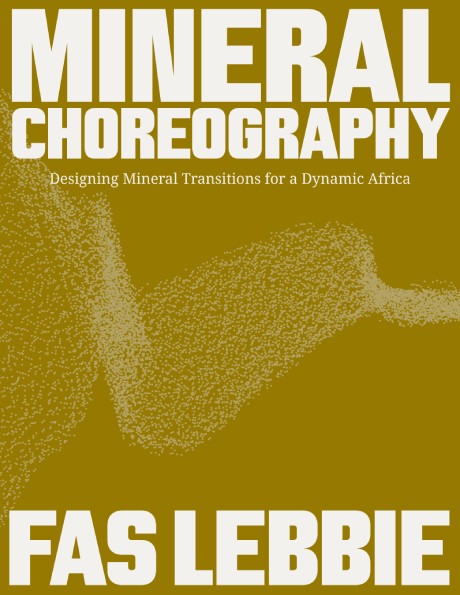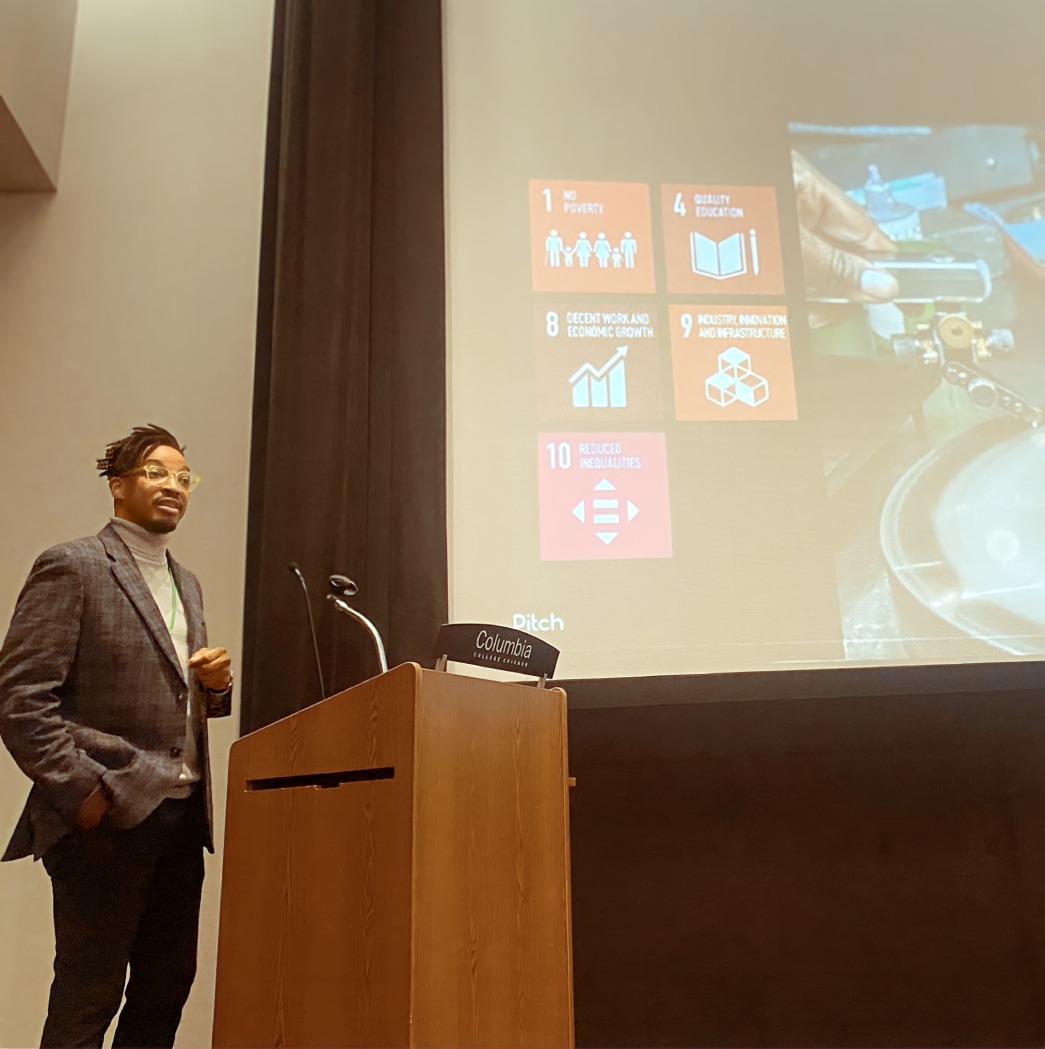Abstract
Minerals are crucial to modern life because they are used to create materials, enabling technologies we use every day. However, a century of burgeoning consumerism, fueled by growth-oriented western capitalism, has led to an acceleration of resource extraction, which depletes mineral resources, accelerates climate change, and increases labor exploitation. The failures of sustainable development practices related to extractivism indicate ontological design challenges within the relational space connecting humans, minerals, and the natural environment. These challenges show how resource extraction effects, and is effected by, a paradoxical core–periphery worldview. In Africa, these worldviews reverberate intensely where mining communities are trapped in an endless cycle of extractive obesity, disrupting social, ecological, and cultural well-being.
Drawing from two decades of fieldwork within mining communities in Sierra Leone, Africa, this research investigates how design decisions and specific worldviews shape unsustainable mineral trajectories. It explores how design can reframe our relationship with resources and be leveraged to transition mineral-dependent economies toward more sustainable and equitable futures. Throughout this work, I draw from African decolonial theories, ontological design, and systems design, employing mixed-methods, place-based, and liberatory research methodologies to analyze mineral trajectories across two primary groups. The first is in the provincial artisanal mining communities in the Kono District of Sierra Leone. I explore Kono's relationship with its minerals through six case studies from the pre-extractive past, the extractive present, and emerging post-extractive practices that delineate a possible future. The second examines consumption sites in American urban privilege zones, far removed from the aforementioned extractive reality.
The research presents an original reframing of design as "mineral choreography," reorienting understandings of minerals as active agents in processes of socio-technical transition. Rather than treating mineral flows as static industrial processes, this work demonstrates that mineral systems are designed, choreographed, and contested spaces shaped by worldviews, agency, and power structures over time.
The major contribution of this work is a "primer" comprising nine elements that establish a new domain of inquiry at the intersection of design, the extractive sector, and sustainability transitions. Collectively, these elements impact three main areas: Transition Design as a discipline, transitions in mineral resource systems in the extractive sector, and African mineral transitions. It establishes new Transition Design frameworks and tools that offer a systems-level perspective for analyzing mineral choreographies. It defines design as an active force within extractive industries that shapes mineral systems and their trajectories. Finally, it identifies frameworks for community-driven resource infrastructures that center local knowledge and agency as a means to powerfully reimagine mineral relations—enabling diverse actors, including mining communities, academic researchers, design practitioners, and policymakers, to activate post-extractive mineral futures.
Keywords: Sustainable Design, Mineral Choreography, Transition Design, Extractivism, Post-Extractivism, Sustainable Mineral Futures, Design for Sustainability, African Decolonial Theory, Ontological Design, Systems Design, Community-Led Design, Resource Governance
Methodology
My research employs an embedded ally approach to conduct multi-sited ethnography across extraction sites in Sierra Leone, consumption contexts in the Global North, and disposal sites where e-waste accumulates. These methodologies offer a holistic approach to studying wicked problems in design by combining personal experience, fieldwork, and historical analysis to understand complex socio-technical systems.
List of Methodologies
- Patchwork ethnography
- Autoethnographic journaling
- Semi-structured interviews
- Multi-scalar analysis
- Archaeological timeline analysis
- Q-methodology
- Co-design sessions
Contributions
This research establishes design as a form of mineral choreography that orchestrates how resources move through systems through specific decisions, qualities, and conditions that shape mineral flows and power dynamics. I argue that design is not merely complicit in extractivism but serves as the fundamental choreographing force that orchestrates and perpetuates unsustainable mineral trajectories in extractive systems. This claim highlights design's dual role as both a problem and a potential solution for mineral resource systems. The findings reveal three distinct worldviews—extractive, pre-extractive, and post-extractive—each creating unique mineral choreography systems reflecting different underlying cosmologies.
Mineral choreographies are design systems shaped by specific worldviews that influence the trajectories of minerals. The dominant extractive worldview transforms mineral elements into resources through commodification while perpetuating unsustainable practices and inequities. The Pre-extractive worldviews choreograph minerals through sacred relationships and reciprocity systems, demonstrating resource stewardship grounded in spirituality and ancestral knowledge. The Post-extractive practices emerge as transition pathways where communities demonstrate agency through contestation design, challenging dominant extractive paradigms. Post-extractive worldviews reveal seeds of the future, offering opportunities to design new systems of sustainable mineral choreography that facilitate the transition toward new mineral epistemologies.
Drawing from these insights, this work establishes a primer for a new domain of inquiry at the intersection of design, the extractive sector, and sustainability transitions. This primer consists of nine interconnected elements that serve as strategic intervention points for transforming mineral resource systems. These elements are organized below into theoretical and practical contributions.
Theoretical contributions advance our understanding of mineral resource systems through four key frameworks: (1) The Mineral Choreography Framework reconceptualizes mineral flows as designed systems shaped by worldviews and materialized through specific decisions; (2) the Mineral Relations Taxonomy provides new language for examining complex relationships between human societies and mineral worlds; (3) the Archaeological Timeline of Worldview Epochs offers the first comprehensive mapping of mineral resource evolution across pre-extractive, extractive, and post-extractive paradigms; and (4) the Decolonial Knowledge Recovery Methodology legitimizes non-written storytelling and cultural practices as valid design evidence, challenging Western epistemological dominance.
Practical contributions translate these theoretical insights into actionable methodologies: (5) The Minerality at Scale Toolkit enables systematic analysis across multiple scales at all stages of a mineral's choreography, bridging the gap between local interventions and systemic change; (6) the Embedded Ally Methodology transforms researcher-community relationships from extractive to reciprocal through a three-stage process; (7) the Kono Language Mineral Literacy recovers indigenous terminology marginalized by colonial extraction; (8) Nested Entrepreneurship reframes entrepreneurship at extraction sites as a way of being rather than merely profit-seeking; and (9) Community-Led Resource Stewardship provides models for decentralized resource infrastructure that maintains cultural integrity while enabling sustainable transitions. Together, these contributions establish a new paradigm for understanding and transforming mineral resource systems toward post-extractive futures that honor human dignity and ecological integrity.
Considering these findings, mineral choreography consists of: a) a methodological and conceptual tool for understanding the interconnections between material, ecological, economic, and social transitions; and b) shaping mineral systems through design decisions that realize post-extractive possibilities. Mineral choreography means designing with worldviews toward the Earth.
Post-Extractive Design Praxis
Communities and organizations seeking to promote post-extractive design may consider the following conditions. This is an excerpt, not an exhaustive list, from the dissertation:
Acknowledging the Earth as a whole activates a biophysical unity between human and non-human entities. This perspective centers on relationality and balances ecological and economic necessities in design decisions, allowing communities to meet their survival needs while maintaining connections with ecosystems, culture, and the land. This challenges the extractive paradigm, which views the Earth primarily as a source of commodities.
Community-centered resource sovereignty enables transition pathways. Communities must have genuine agency to decide whether to continue sustainable mining operations or transition to alternatives that are not based on mining, as well as livelihoods that cater to place-based needs and cultural values. This sovereignty manifests through both mining communities' control over mineral trajectories and their ability to establish no-go zones for extraction.
Knowledge gaps in mineral literacy must be addressed through educational initiatives. Mineral illiteracy creates power imbalances that limit understanding of minerals' true value beyond economic considerations. Building knowledge capacity around place-based mineral resources creates conditions for communities to engage meaningfully in global mineral systems.
Entrepreneurship serves as a critical transitional strategy for diversification. The distinct African entrepreneurial mindset emerges as a way of being rather than merely profit-seeking. This place-based, culturally informed approach integrates community values with economic activities, building resilience through alternative livelihoods.
Reclamation of indigenous terminology and practices counters epistemicide. Recovering vocabulary and concepts marginalized by colonial extraction provides communities with linguistic resources to articulate sustainable relationships with minerals in their own terms.
The recognition that contradictions between ecological and economic imperatives cannot be fully resolved helps to move on when the process is stuck. Post-extractive design acknowledges persistent tensions between immediate survival needs and long-term ecological health, seeking not to eliminate these contradictions but to navigate them productively through adaptive approaches.


